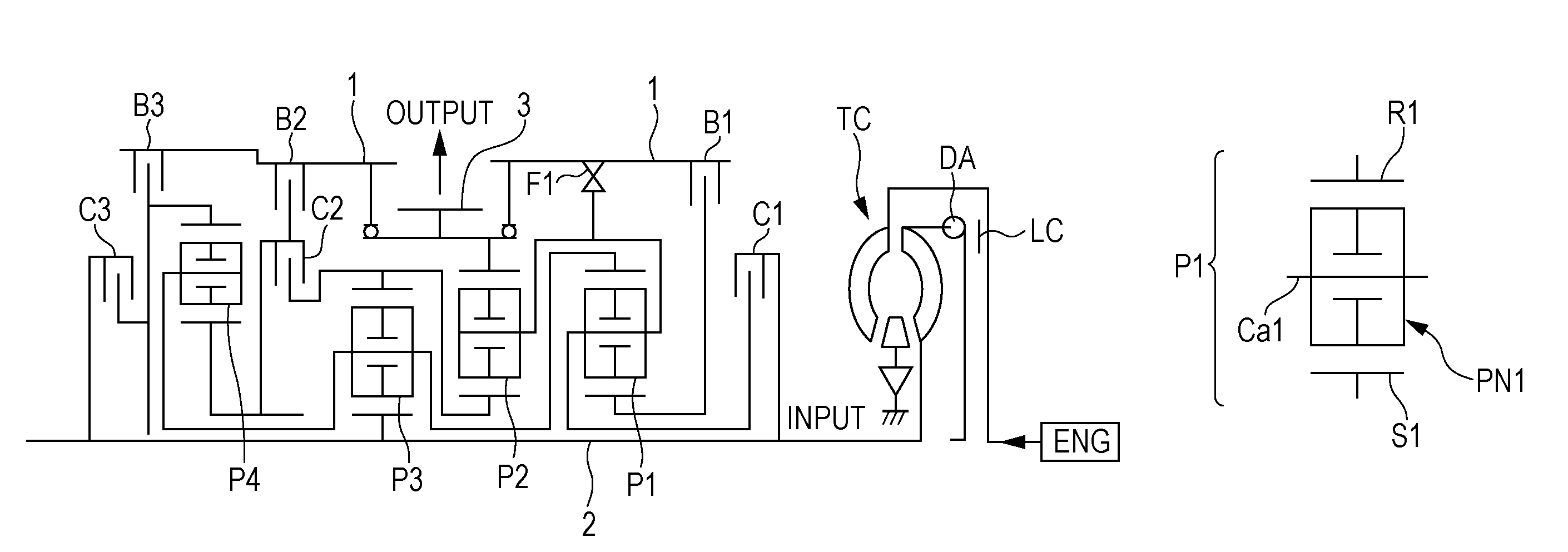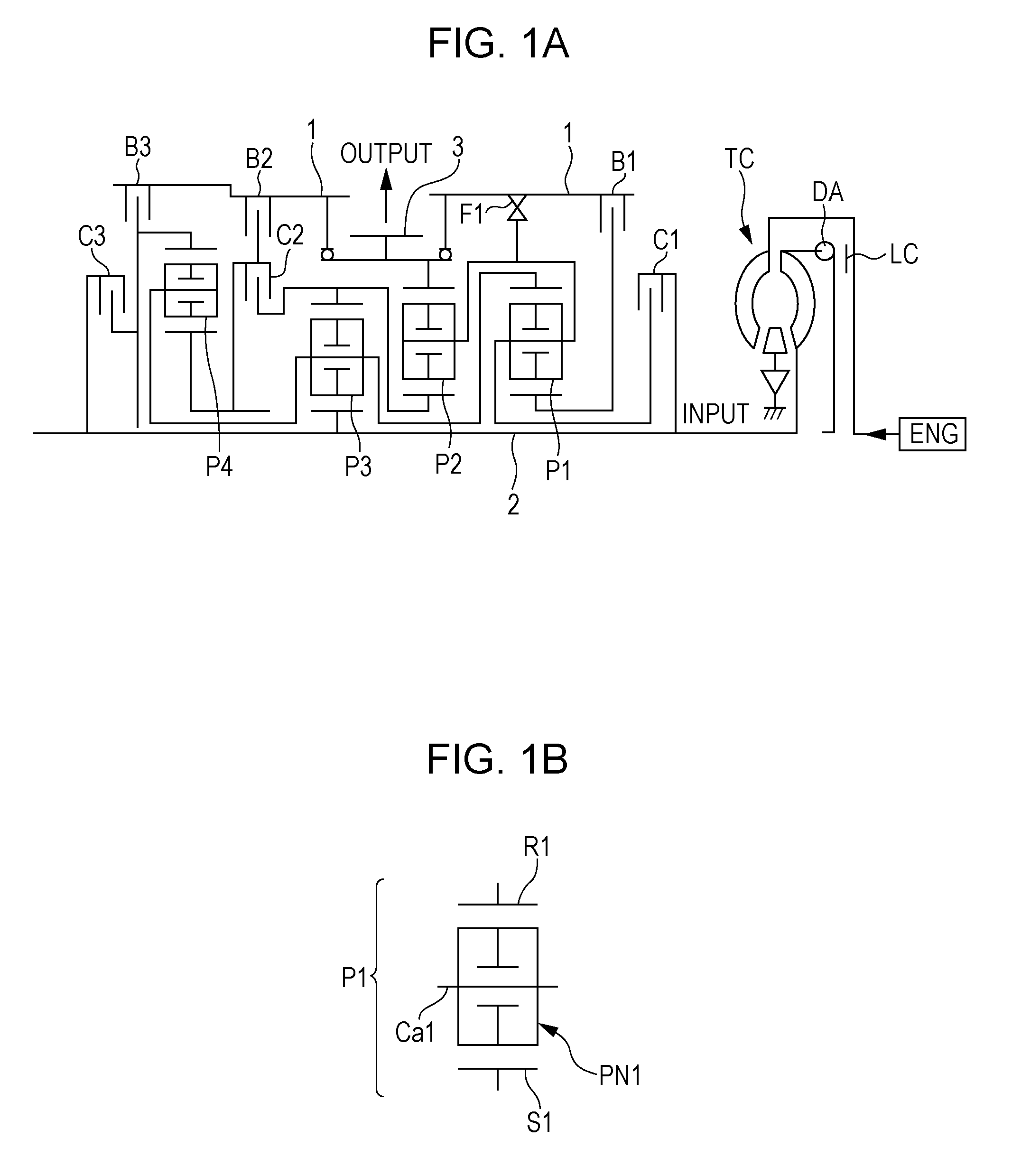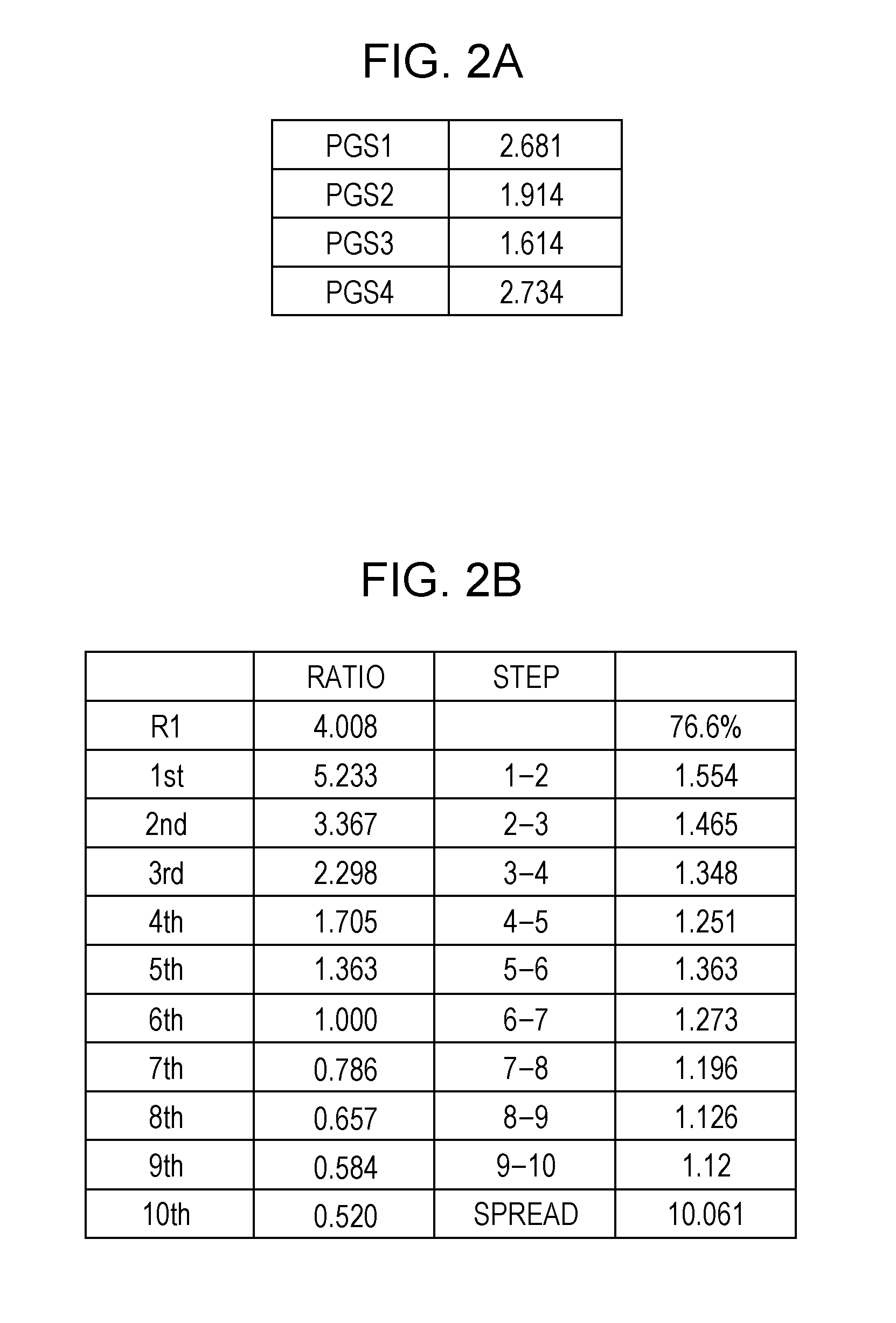Automatic transmission controller
a transmission controller and automatic technology, applied in mechanical equipment, transportation and packaging, gearing, etc., can solve the problems of unpredictability of backward movement and driver being unexpectedly inconvenienced
- Summary
- Abstract
- Description
- Claims
- Application Information
AI Technical Summary
Benefits of technology
Problems solved by technology
Method used
Image
Examples
first embodiment
Advantages of First Embodiment
Advantage 1
[0080]Existing idling reduction control methods address the problem of backward movement of a vehicle, which may occur when control of the vehicle returns from idling reduction control to normal control, by using an inclination angle sensor or by detecting a brake pressure. In contrast, the present embodiment prevents backward movement of a vehicle by engaging two engagement elements (C2 and B2) during idling reduction control so as to allow the input shaft to freely rotate while locking rotation of the output shaft in a reverse direction (or in both forward and reverse directions). Therefore, the present embodiment solves the above problem with the existing methods. That is, backward movement of a vehicle can be prevented without using a sensor.
Advantage 2
[0081]In particular, the present embodiment has an advantage obtained by using the TWC in “idling reduction engagement”. Thus, when C2 and B2 are engaged (i.e. “idling reduction engagement”...
second embodiment
Advantages of Second Embodiment
[0096]In the second embodiment described above, the accumulator is used when the engine stops, instead of the oil pump used in the first embodiment. Therefore, the second embodiment has advantages the same as those of the first embodiment, which are obtained by using “idling reduction engagement” and a combination of “idling reduction engagement” and the TWC. Hereinafter, a modification of the second embodiment will be described.
first modification
[0097]When the vehicle speed is low before the vehicle stops in a D-range, idling reduction engagement (where C2 are B2 engaged) may be set early in order to fill an oil passage, which is used when returning from idling reduction control, with ATF (in order to reduce an ineffective stroke).
Advantage 1
[0098]Hydraulic pressure is not supplied when idling reduction control is being performed. When returning from idling reduction control, the clutch C2 and the brake B2 are immediately engaged by fully activating the linear solenoids for controlling the clutch C2 and the brake B2. Thus, backward movement of the vehicle can be reliably avoided. This is because, the hydraulic pressures applied to C2 and B2 have been stored by operating the oil pump while the engine is normally driven.
PUM
 Login to View More
Login to View More Abstract
Description
Claims
Application Information
 Login to View More
Login to View More - R&D
- Intellectual Property
- Life Sciences
- Materials
- Tech Scout
- Unparalleled Data Quality
- Higher Quality Content
- 60% Fewer Hallucinations
Browse by: Latest US Patents, China's latest patents, Technical Efficacy Thesaurus, Application Domain, Technology Topic, Popular Technical Reports.
© 2025 PatSnap. All rights reserved.Legal|Privacy policy|Modern Slavery Act Transparency Statement|Sitemap|About US| Contact US: help@patsnap.com



